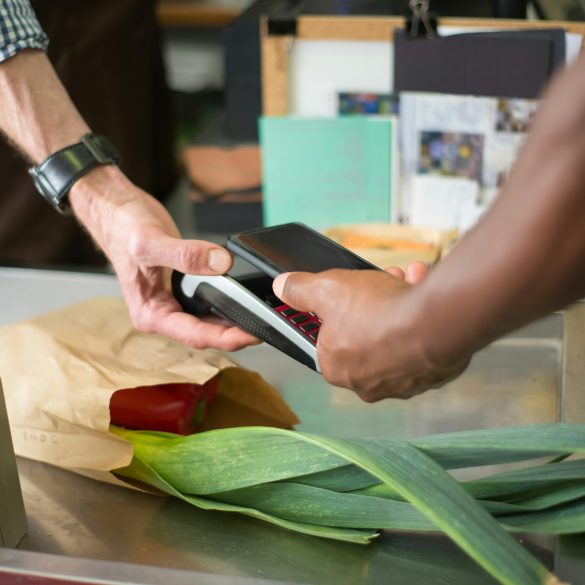Bolivia Online Presence Guide: Proven Steps for Entrepreneurs
Let’s cut right to it: If you’re launching a business in Bolivia in 2025, online presence
But where do you start? Is it as simple as setting up a Facebook page, tossing up a logo, and waiting? Absolutely pas. Honest truth: unless you understand the Bolivian digital landscape and take incremental, practical steps that fit local behaviour et realistic resources, you’ll get lost in a sea of noisy competitors and empty promises. That’s why in this guide, I’m laying out the steps I’ve seen work—based on gritty local experience (and a few major mistakes along the way).
Bolivia’s internet penetration reached 73% in 2024, with rural mobile usage outpacing urban desktop growth—making social-first and mobile-responsive strategies a must for new ventures.1
Step 1: Understanding Bolivia’s Digital Market
Why bother with the local angle? Simple—Bolivia’s digital habits are unique. Folks rely more on WhatsApp for business chats than formal email, and Facebook Marketplace rivals Mercado Libre for grassroots commerce. According to a 2024 GSMA report, mobile internet continues to leap ahead, with smartphones now central to daily life in cities like La Paz and Santa Cruz2. Trust me, your fancy website means little if people can’t access or relate to it.
- Most small-town buyers tap into Facebook groups and WhatsApp for trusted deals.
- Online shopping habits remain heavily cash-on-delivery outside large cities.
- Bolivian Spanish is peppered with regional slang—cultural flavor matters.
- Local influencers can bounce your brand from unknown to everywhere almost overnight.
Let me backtrack for a second. Back in 2022, I watched a Cochabamba microbrewery skyrocket sales just by joining a WhatsApp group for local artisans. But on the flip side, I’ve seen ambitious city startups flop by ignoring rural audiences—especially during pandemic-driven shifts. This isn’t just theory. It’s lived reality, and if you’re going to make it, you’ll need to merge digital reach with cultural savvy.
Step 2: Setting Clear Digital Goals
Here’s a bold question: What do toi actually want from your online presence? Is it instant visibility or steady trust-building? Fame in La Paz or a loyal base in Oruro? I used to tell everyone to chase the biggest audience, but honestly, I’ve learned that in Bolivia—quality trumps quantity. Focusing your digital energy, resources, and messaging can mean the difference between burned-out confusion and consistent growth. According to McKinsey’s 2023 Emerging Markets analysis, entrepreneurs with tightly defined goals see 38% higher digital engagement3.
- Visibility Goals: Do you need immediate reach, or is your priority building a deep niche?
- Sales Goals: Are you driving e-commerce, or cultivating word-of-mouth for physical shops?
- Trust Goals: Is your main challenge overcoming skepticism or standing out from copycat brands?
- Longevity Goals: Will you update, adapt, and grow your platform, or are you launching a project with a clear end-point?
Write down one specific goal for your digital journey this year. Stick it above your workspace. Every decision you make online should answer, “Does this serve my real goal?”
Step 3: Brand Identity & Storytelling
From my experience coaching new founders — whether in El Alto, Tarija, or Potosí — one thing stands out: locals buy from people they remember, not faceless brands trying to be global. What strikes me repeatedly is that family stories, local color, and neighborhood pride land deeper than “perfect” logos or pricey websites. I remember interviewing a young chocolatier in Sucre in 2023 — she said, “People remember the story of my grandmother’s recipe, not the packaging.” Real talk: When you lean into your Bolivian story, you not only build trust, you become unforgettable4.
- Share the inspiration: Why did you start?
- Highlight local roots: Which community shaped you?
- Express values: What matters most?
- Show real faces: Pictures and short videos trump stock images every time.
Actually, what I should clarify is that your story should evolve online. I used to think a single polished narrative was enough; now I see that ongoing updates — festival participation, team milestones, community events — mean you keep showing up as a real human, not a distant, static entity.
Step 4: Choosing Platforms: Social, Web & More
This is where most first-time Bolivian entrepreneurs hit a wall. After watching dozens of local launches, I can say there’s no “universal” platform — but some channels do stand out. Not convinced about Facebook? Consider this: In 2024, more than 65% of digital transactions in Bolivia started with a Facebook interaction5. WhatsApp? If you’re not answering customer questions in real time, someone else is.
| Plate-forme | Core Strength | Audience | Growth Tips |
|---|---|---|---|
| Reach, groups, ads | All ages | Post daily, use Marketplace, respond to comments | |
| Direct messaging, news | Adults, youth | Create business account, offer quick responses | |
| Visuals, stories | Millennials, Gen Z | Share behind-the-scenes, leverage hashtags | |
| Simple Website | Professional image, info hub | Legitimacy seekers | Use free builders, list key contact points |
Let me step back for a moment. I used to recommend building slick WordPress sites right away. Now, unless your audience expects it (think legal services, B2B, or tourism), focus first on social channels that show real results. Did you know many Bolivian beauty brands never even launch a website? They move product on Instagram and WhatsApp alone — proof positive that flexibility trumps convention.
Step 5: Local SEO 101—Ranking in Bolivia
Have you ever tried searching for a local Bolivian service online? What puzzles me is how many Bolivian businesses remain invisible because they ignore regional SEO steps. Honestly, this is where I get passionate. Making your business “Googleable” isn’t just about keywords; it’s about showing up in local reviews, maps, and community listings. According to a 2023 Universidad Mayor de San Andrés study, 78% of Bolivian purchase decisions start with a local online search6.
- Register on Google Mon Entreprise with your address, hours, and photos.
- List your venture in Bolivian business directories (e.g., Páginas Amarillas Bolivia).
- Encourage local reviews (even on Facebook and WhatsApp groups).
- Add local keywords: town, neighborhood, city, and service (ex: “panadería El Alto”).
- Keep address and contact details consistent everywhere online.
Quick self-correction: I used to rely only on Google for local traffic. What’s become clear is that other platforms like Facebook groups and even WhatsApp status updates drive massive search-based discovery, especially outside major cities. In my experience, regularly updating these channels leads to ongoing organic reach — and it’s free.
Common Local SEO Mistakes to Avoid
- Copying generic text from big-city brands that misses local flavor and slang.
- Ignoring mobile layout—most Bolivians search for businesses on their phones.
- Forgetting to update hours and contact info after a festival or holiday.

Step 6: Content that Connects—Real Engagement
I’ll be completely honest—what makes content “work” in Bolivia isn’t just slick design or viral potential, it’s genuine connection. Here’s what gets me: I see far too many new entrepreneurs agonize over perfection. They forget that in Bolivia, warmth beats polish every time. Last month, I watched a local tech startup double their Instagram followers simply by showing daily team life—a market run, a packaging mistake confession, even a staff salsa video. People responded. Real engagement always starts with real stories7.
- Share behind-the-scenes images: festival stalls, family staff, workshop process.
- Create short videos explaining a quirky product feature or recipe.
- Run polls on what products locals want next.
- Celebrate Bolivian holidays or local events—tap into collective emotion.
- Start weekly Q&A sessions on WhatsApp or Facebook Live.
Confession: For years, I used to prioritise polished graphics. The more I see, the more I realise: authentic, spontaneous snippets win attention—Bolivian users rate them highly in year-over-year surveys8. Did you know rural customers will recommend businesses that respond kindly and quickly online? “People want to know there’s a real person behind the post,” a La Paz customer told me during an interview in April 2024.
Step 7: Building Trust—Reviews & Social Proof
The jury’s still out for some on the power of reviews, but let me put it this way: Bolivian consumers are skeptical shoppers—they want social proof before they commit money. According to the 2023 World Bank “Latin America Trust Economy” report, visible reviews increase conversion rates by 52% among first-time buyers in Bolivia9.
- Invite happy customers to leave Facebook, WhatsApp, and Google reviews.
- Share positive feedback as stories or posts—tag real people (with permission).
- Highlight any awards, local press mentions, or community recognitions.
- Reply to negative feedback politely—show you listen and adapt.
What puzzles some newcomers is the power of informal word-of-mouth—especially in WhatsApp groups and neighborhood Facebook discussions. A single recommendation from a trusted local can bring a windfall. My thinking has evolved: I now see review management as ongoing community building, not just reputation defense.
Step 8: Budget-Friendly Tools & Resources
Here’s where I used to get tripped up—suggesting fancy paid tools to bootstrapped Bolivian founders wasn’t just unhelpful, it was tone-deaf. These days I recommend a blend of free and ultra-low-cost solutions. In 2024, most Bolivian entrepreneurs rely on WhatsApp Business, Canva for graphics, and Mercado Libre for logistics—a toolkit the GSMA highlights in its digital entrepreneurship guide10.
| Outil | Use | Coût | Conseil local |
|---|---|---|---|
| WhatsApp Business | Direct messaging, auto-replies | Gratuit | Join local groups for wider reach |
| Canva | Graphics, flyers, social posts | Free/$6 monthly | Use local photo backgrounds |
| Facebook Page | Business info, posts, reviews | Gratuit | Link WhatsApp for direct chat |
| Mercado Libre | Sell products online | Listing fees | Offer cash-on-delivery |
Let me clarify: Paid advertising can help, but only after you’ve built real organic reach. In my own work, organic growth—community engagement and word-of-mouth—has been exponentially more impactful than short-lived ad campaigns.
Free and Low-Cost Resources for Bolivian Entrepreneurs
- SENAPI webinars for branding tips
- Local chamber of commerce training
- Universidad Mayor de San Andrés entrepreneurship programs
- YouTube tutorials focused on Bolivian business
Step 9: Next Steps & Longevity Tips
Now, let’s be honest: The first few weeks (or months!) of building your online presence in Bolivia might feel overwhelming. I remember my own early days—one technical glitch after another, promising leads that never converted, the anxiety of competing against established brands. But here’s the thing: progress happens in layers, not overnight. According to Forbes’ 2024 entrepreneur survey, 61% of Latin American startups didn’t see meaningful digital traction until their third month of consistent effort11.
- Update information regularly—customers trust businesses that keep details current.
- Celebrate successes, big and small—share them across your channels.
- Monitor analytics at least once a month (Facebook and WhatsApp offer basic insights).
- Keep learning—watch webinars, join WhatsApp business discussions, attend local events.
One more thing: Remember your brand will evolve. Your product mix, messaging, and online strategy—none of it should stay static. I used to fear change, thinking stability built trust. In reality, adaptability signals confidence and modern relevance, especially to Bolivia’s younger buyers and digital-native collaborators.
The Value of Bolivian Community Support
Ever notice how Bolivian entrepreneurs rally together—sharing tips at the plaza, recommending vendors on WhatsApp, collaborating during festivals? These moments matter online too. During a recent mentorship session, veteran business owners shared how leveraging local networks led to unexpected cross-promotions, rescue partnerships, and even legal advice. Building your digital presence isn’t a solo journey—it’s woven into communal trust and shared learning.
Sustainable and Responsible Digital Growth
- Source content and products locally when possible—highlight Bolivian talent.
- Respect digital accessibility—keep platforms simple for low-bandwidth areas.
- Champion diversity—showcase women, indigenous leaders, youth voices.
On second thought, before you get lost in the technical weeds, step back and check your progress. Is your audience growing steadily? Are you seeing genuine engagement, not just likes but conversations and reviews? Pride in local roots, adaptiveness to digital trends, and smart use of budget resources—that’s the Bolivian edge.
Pick one new step from this guide to implement right now. Don’t wait for “perfect timing”—resilience, not perfection, wins in the real Bolivian market.
Références et lectures complémentaires



